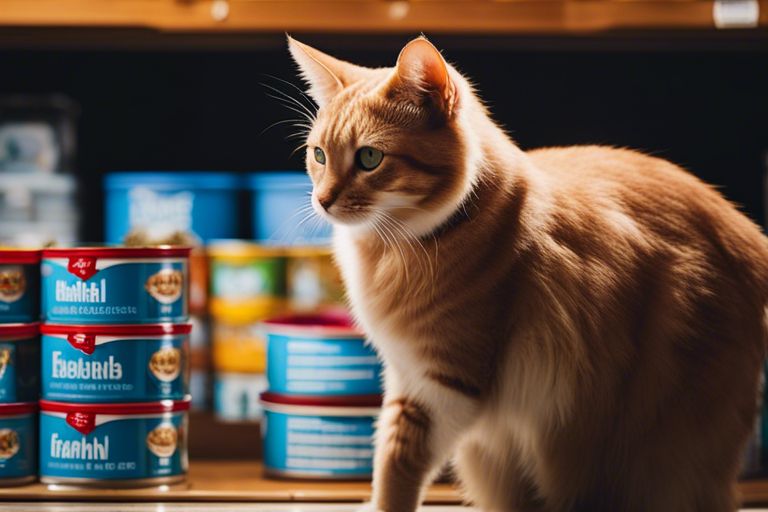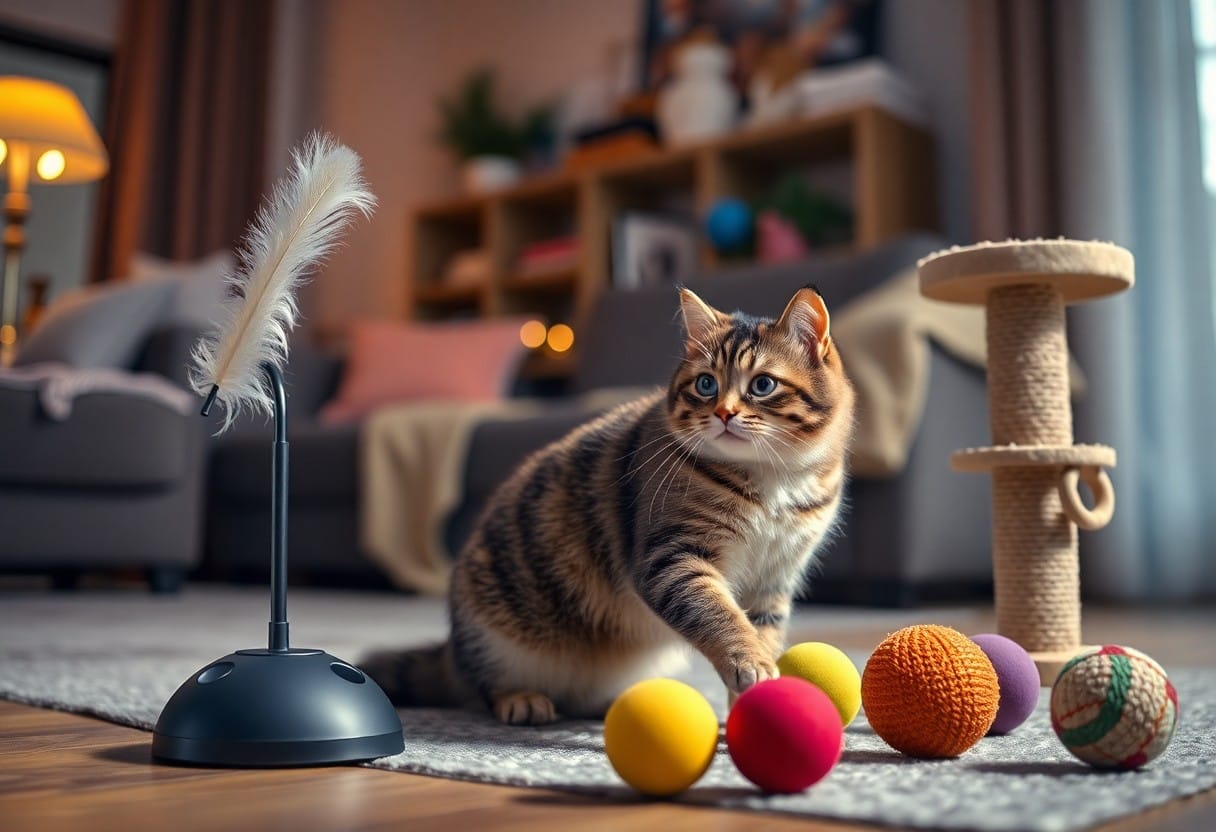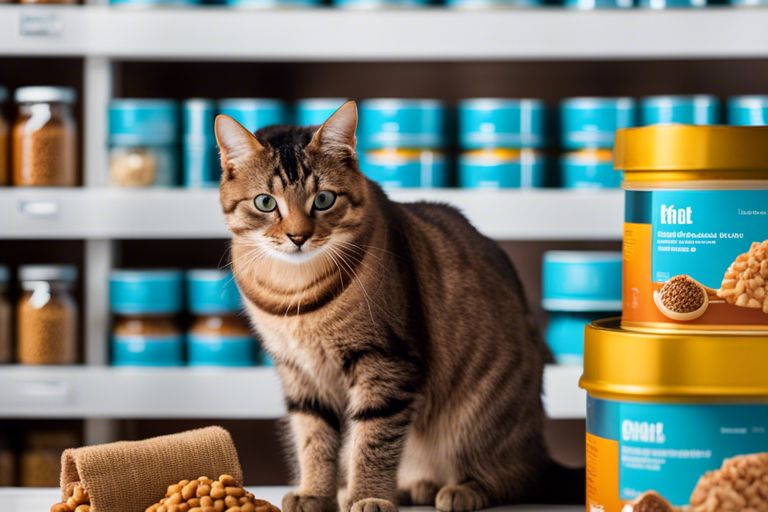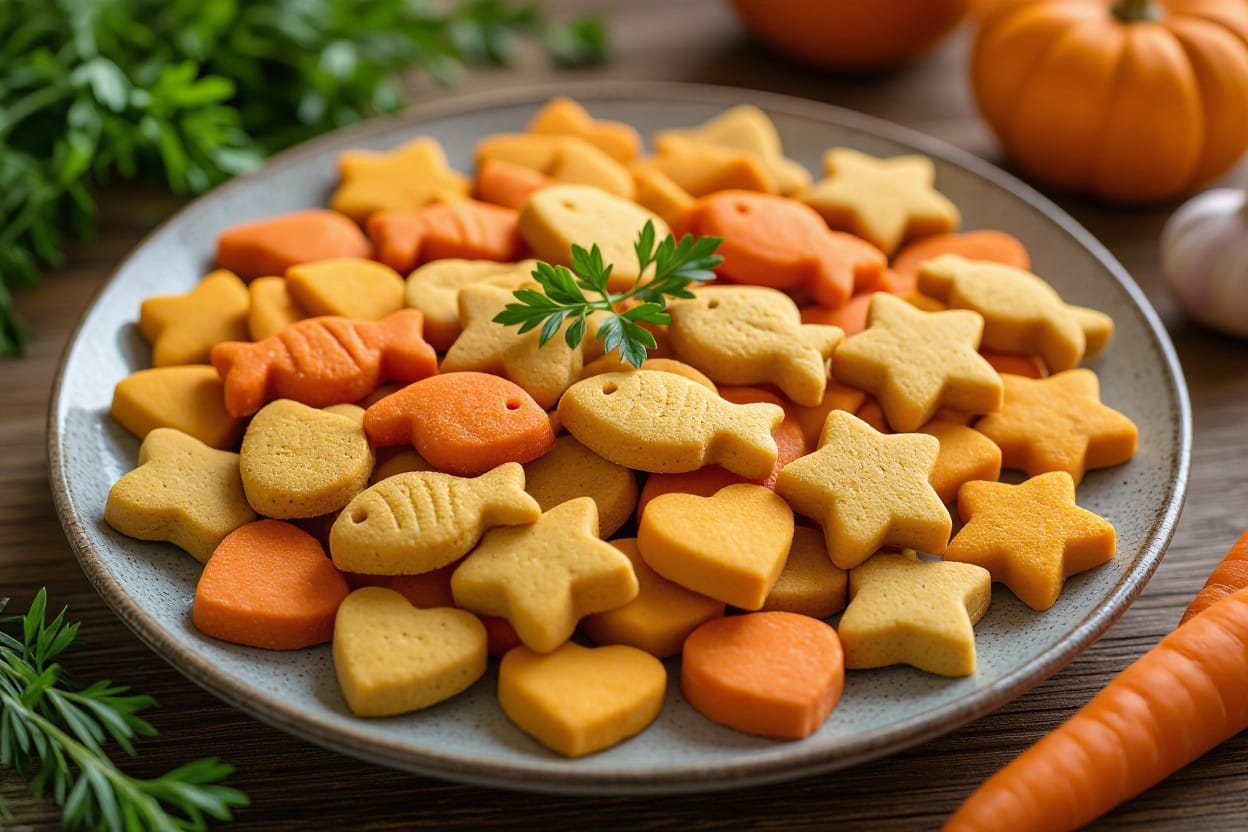Overwhelmed by the array of information on cat food labels? Understanding what goes into your feline’s diet is crucial for their health and well-being. In this guide, we break down the key components of cat food labels, empowering you to make informed decisions about your cat’s nutrition. Learn to decipher ingredient lists, nutritional adequacy statements, and guaranteed analysis to ensure your furry friend is getting the best diet possible.
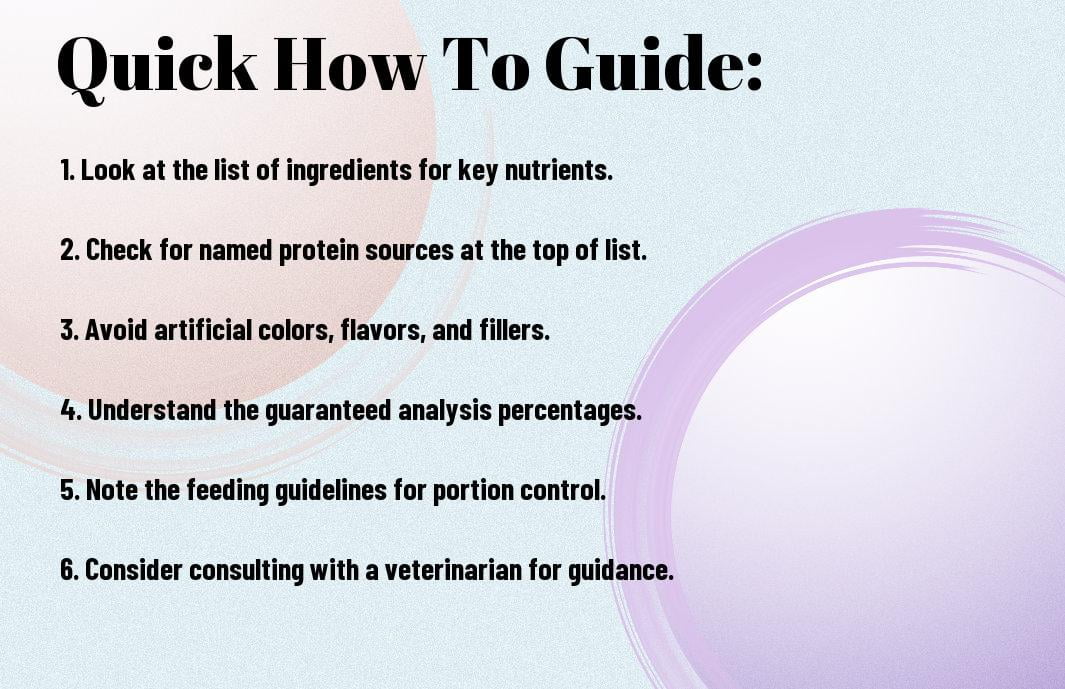
Assessing Your Cat’s Nutritional Needs
Factors Influencing Dietary Requirements
One of the key steps in understanding your cat’s nutritional needs is to consider the various factors that influence their dietary requirements. Factors such as age, activity level, breed, and any existing health conditions can play a significant role in determining the type of diet that is best suited for your feline companion. For example, kittens require a diet that is higher in calories and protein to support their growth and development, while senior cats may benefit from a diet that is lower in calories but higher in vital nutrients to support their aging bodies.
- Age
- Activity level
- Breed
- Health conditions
After considering these factors, you can better tailor your cat’s diet to meet their specific needs and ensure they receive the necessary nutrients for optimal health.
Consultation with a Veterinarian
Some pet owners may find it helpful to consult with a veterinarian when assessing their cat’s nutritional needs. A veterinarian can provide valuable insight and recommendations based on your cat’s unique health profile and dietary requirements. They can also help identify any specific dietary needs or restrictions that your cat may have based on their individual health status.
With their expertise and knowledge of feline nutrition, veterinarians can guide you towards selecting the most appropriate diet for your cat, whether it be a commercial cat food or a homemade diet. Consulting with a veterinarian can help ensure that your cat’s nutritional needs are met in a safe and effective manner.
Comprehending the Ingredients List
Despite the sometimes overwhelming amount of information on cat food labels, understanding the ingredients list is crucial in making informed choices for your feline friend’s health. The ingredients are listed in descending order by weight, with the heaviest components at the beginning of the list.
Deciphering the Order of Ingredients
One important aspect of reading cat food labels is to decipher the order of ingredients. The first few items on the list make up the majority of the food’s content. Look for whole protein sources like chicken, fish, or beef as the primary ingredients. Avoid products that list fillers or by-products as the main components.
Identifying Quality Protein Sources
Clearly identifying quality protein sources is key in selecting a nutritious cat food. Opt for products with named meat sources such as ‘chicken’ or ‘salmon’ rather than generic terms like ‘meat by-products’ or ‘animal digest.’ Protein is important for your cat’s overall health and well-being, so ensuring they have high-quality sources in their diet is paramount.
Sources rich in amino acids, like taurine, are vital for your cat’s heart and eye health. Look for ingredients like chicken, turkey, or fish to provide these important nutrients to support your cat’s overall health.
Recognizing Fillers and Allergens
Clearly recognizing fillers and allergens in the ingredients list can help you avoid potential health issues for your cat. Common fillers include corn, wheat, and soy, which add little nutritional value and can cause digestive problems for some cats. Allergens like artificial colors, flavors, and preservatives should also be avoided to prevent adverse reactions in sensitive cats.
List any potential allergens or fillers that your cat has reacted to in the past, and be diligent in checking labels to ensure they are not present in their food. Your cat’s well-being is directly impacted by the ingredients you choose, so paying attention to these details is important for their health.
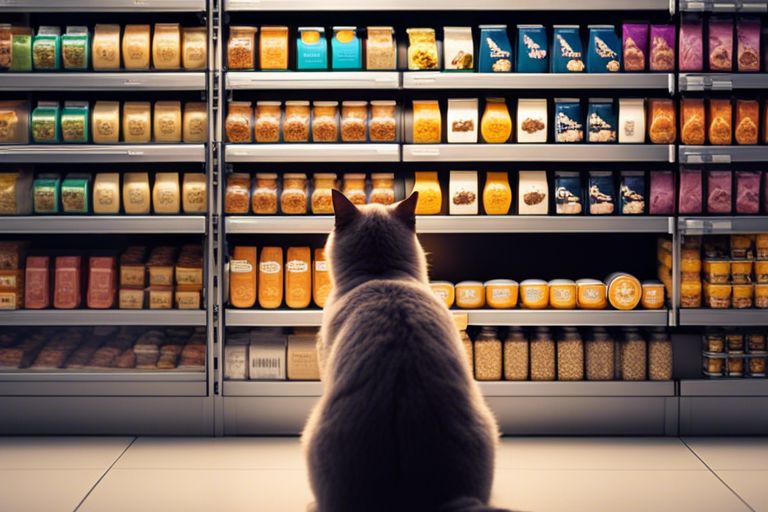
Exploring Nutritional Information
Analyzing Guaranteed Analysis
You should pay close attention to the guaranteed analysis section of cat food labels. This section provides minimum and/or maximum percentages of crude protein, crude fat, crude fiber, and moisture in the food. Understanding these values can help you assess whether the cat food meets your feline’s dietary needs. For example, cats are obligate carnivores and require a diet high in protein, so a high percentage of crude protein in the guaranteed analysis is important.
The Significance of Taurine in Feline Diets
With cats being unable to synthesize taurine on their own, it is crucial to ensure that their diets contain this important amino acid. Taurine plays a vital role in maintaining healthy vision, heart function, and overall well-being in cats. A deficiency in taurine can lead to serious health issues, including blindness and heart problems. Therefore, always check the cat food label to confirm the presence of taurine in the ingredients list to safeguard your cat’s health.
Content
Understanding Food Types and Formats
Keep in mind that cat food comes in various types and formats, each with its own set of benefits and considerations. It’s important to understand these differences to make an informed decision about what to feed your furry friend. After all, choosing the right food format can have a significant impact on your cat’s health and well-being.
| Wet Food | Dry Food |
| Contains higher moisture content | Convenient and cost-effective |
| Less processed and closer to a cat’s natural diet | Helps maintain dental health |
| Can be more palatable for picky eaters | Longer shelf life |
| Potential for bacterial contamination if left out | May lead to dehydration if not enough water is consumed |
| More expensive than dry food | Higher in carbohydrates |
The Pros and Cons of Wet, Dry, and Raw Diets
With so many options available, it can be overwhelming to choose the right food format for your cat. Wet food, dry food, and raw diets all have their own set of pros and cons to consider.
| Wet Food – Pros | Wet Food – Cons |
| Higher moisture content | Potential for bacterial contamination if left out |
| Less processed | More expensive than dry food |
| More palatable | |
| Dry Food – Pros | Dry Food – Cons |
| Convenient and cost-effective | May lead to dehydration |
| Helps with dental health | Higher in carbohydrates |
| Raw Diet – Pros | Raw Diet – Cons |
| Closer to a cat’s natural diet | Risk of bacterial contamination |
Tips for Choosing the Right Food Format for Your Cat
Your cat’s individual needs and preferences should guide your choice of food format. Consider factors such as age, activity level, any health issues, and personal preferences.
- Consult with your veterinarian to determine the best food format for your cat.
- Monitor your cat’s weight and adjust their diet accordingly.
- Introduce new foods gradually to prevent digestive upset.
With these tips in mind, you can select the most suitable food format to keep your cat healthy and happy. Bear in mind, what works for one cat may not work for another, so it’s important to tailor your choice to your feline friend’s specific needs. Thou.
Decoding Label Claims and Certifications
Organic, Grain-Free, and Other Common Claims
All cat food labels will have various claims and certifications designed to catch your eye and persuade you to choose their product. Understanding what these claims mean is crucial in making informed decisions about your cat’s diet. When looking at organic or grain-free claims, keep in mind that these are not necessarily indicators of nutritional superiority. Organic ingredients are grown without synthetic pesticides or fertilizers, while grain-free foods do not contain traditional grains like corn or wheat. However, it’s crucial to assess the overall quality and balance of ingredients in the entire recipe.
Regulatory Bodies and Nutritional Adequacy Statements
Some cat food labels may include certifications from regulatory bodies like the Association of American Feed Control Officials (AAFCO), indicating that the food meets certain nutritional standards. Pay attention to nutritional adequacy statements on the label, as they provide information on which life stage the food is suitable for, such as growth, maintenance, or all life stages. These statements ensure that the food has been formulated to meet the specific needs of cats at different life stages. However, it’s always best to consult with your veterinarian to ensure you’re choosing the right food for your cat’s unique needs.
Claims
Claims like “natural,” “holistic,” or “premium” on cat food labels are not regulated and can be misleading. It’s crucial to look beyond these marketing terms and focus on the ingredients list and nutritional adequacy statements to make an informed choice for your cat. Remember that each cat is unique, so what works for one may not work for another. Consulting with a veterinarian can help you tailor your cat’s diet to their individual requirements.
Portion Sizes and Feeding Guidelines
Calculating Proper Portion Sizes for Your Cat
Guidelines for portion sizes can vary depending on your cat’s age, weight, activity level, and overall health. It’s important to follow the feeding guidelines provided on the cat food label to ensure your cat is getting the right amount of nutrients. Generally, a starting point for portion sizes is about 24-35 calories per pound of body weight per day, but this can vary.
Adjusting Portions Based on Cat Food Caloric Content
You may need to adjust your cat’s portion sizes based on the caloric content of the cat food you are feeding. Higher calorie cat foods will require smaller portion sizes, while lower calorie options may require larger portions to meet your cat’s daily dietary needs. It’s important to pay attention to the caloric content of the food and adjust portion sizes accordingly to prevent under or overfeeding.
With a higher calorie content, your cat may need to eat less volume of food to meet their daily caloric requirements. Conversely, lower calorie foods may require larger portions to provide the necessary nutrients for your cat’s health and well-being.
Additional Considerations
The Role of Preservatives and Additives
On cat food labels, preservatives and additives are often listed to enhance flavor, texture, and shelf life. It’s important to understand what these ingredients mean for your cat’s health. While some preservatives are necessary to keep the food safe for consumption, others may be harmful in the long run. Look for natural preservatives like vitamin E and C instead of artificial ones like BHA, BHT, and ethoxyquin.
Understanding Product Recalls and Brand Reputation
Understanding the history of product recalls and the reputation of the brand is crucial when choosing a cat food. Product recalls can happen due to contamination, nutrient imbalance, or other safety concerns. A reputable brand will have fewer recalls and transparent information about their sourcing and manufacturing processes. Do your research, read reviews, and choose brands with a track record of quality and safety.
Additional information on product recalls includes checking if the brand has had multiple recalls in the past and the reasons behind them. Look for brands that have strict quality control measures in place to minimize the risk of recalls and prioritize the safety and health of your pets.
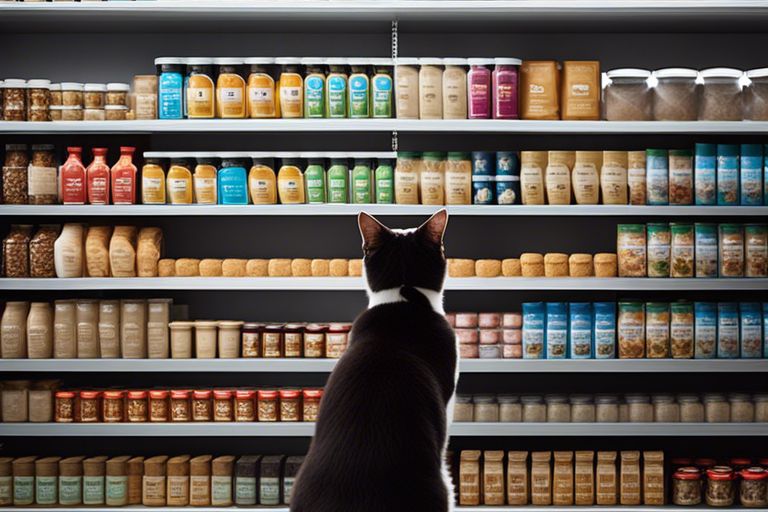
Practical Tips for Making Informed Choices
Your journey to understanding cat food labels doesn’t end with decoding the ingredients – it also involves making conscious decisions about what you feed your feline friend. Here are some practical tips to help you make informed choices when it comes to selecting the right cat food for your pet.
How to Compare Different Cat Food Brands
- Ingredients: Pay close attention to the first few ingredients listed on the label as they make up the majority of the food.
- Nutritional Content: Look for a balanced blend of protein, fats, carbohydrates, vitamins, and minerals that meet your cat’s specific needs.
Clearly, understanding the differences between various cat food brands can be challenging. By comparing ingredients and nutritional content, you can make an informed decision that meets your cat’s dietary requirements. After all, your cat’s health and well-being depend on the quality of food you provide.
Saving Money Without Compromising on Quality
Money-saving doesn’t have to mean sacrificing the quality of your cat’s food. Look for discounts, promotions, and coupons from reputable brands to cut down on costs without compromising on nutrition and taste.
Informed decisions about budget-friendly options can still provide your cat with high-quality, nutritious meals. By keeping an eye out for sales and promotions, you can prioritize your cat’s health while being mindful of your expenses.
Summing up
With these considerations in mind, reading and understanding cat food labels doesn’t have to be overwhelming. By paying attention to the ingredients list, guaranteed analysis, and understanding the terminology used, you can make more informed decisions about the food you provide for your feline friend. Remember to choose a high-quality cat food that meets your cat’s specific nutritional needs and preferences to ensure they receive the best possible diet for a long and healthy life.
FAQ
Q: Why is it important to read and understand cat food labels?
A: It is important to read and understand cat food labels in order to ensure that your cat is receiving the proper nutrition needed for a healthy and balanced diet. By understanding the ingredients and nutrients listed on the label, you can make informed decisions about what to feed your cat.
Q: What should I look for when reading cat food labels?
A: When reading cat food labels, look for a complete and balanced nutritional profile that includes high-quality protein sources, important vitamins and minerals, and limited fillers or by-products. Avoid artificial additives, colors, and preservatives.
Q: How can I determine the quality of ingredients in cat food?
A: To determine the quality of ingredients in cat food, look for named animal protein sources (such as chicken, turkey, or fish) listed as the first few ingredients. Avoid vague terms like “meat by-products” or “animal digest,” as these may indicate lower quality ingredients.
Q: What are common terms to watch out for on cat food labels?
A: Common terms to watch out for on cat food labels include “by-products,” “fillers,” “artificial colors,” “artificial preservatives,” and “added sugars.” These ingredients may be of lower quality and offer less nutritional value to your cat.
Q: Are there any regulations governing what can be included on cat food labels?
A: Yes, the Association of American Feed Control Officials (AAFCO) sets standards and regulations for pet food labeling to ensure that products are safe and nutritionally complete. Look for a statement on the label that indicates the food meets AAFCO nutrient profiles or has undergone feeding trials.
